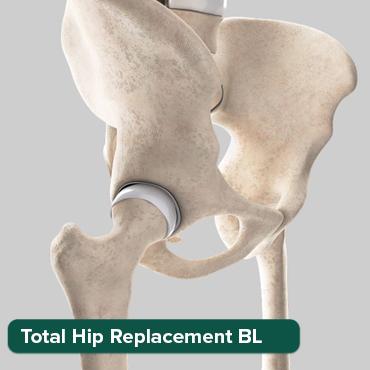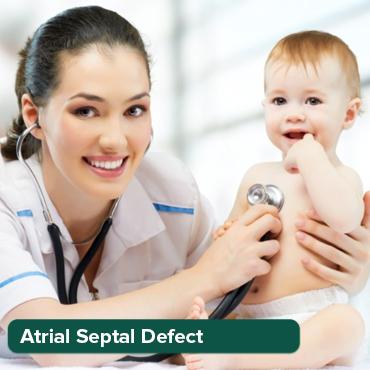
Stem Cell Transplants: A Lifeline for Blood Cancer Patients
03 Nov, 2023
 Healthtrip Team
Healthtrip TeamStem cell transplants have become a beacon of hope for many patients suffering from blood cancers such as leukemia, lymphoma, and multiple myeloma. This medical procedure, which aims to replenish the body with healthy stem cells to replace the diseased or damaged bone marrow, has evolved significantly over the years, offering a chance for a cure or long-term remission for many patients. In this blog post, we will delve deep into the world of stem cell transplants, exploring how they function as a lifeline for those battling blood cancer.
Most popular procedures in India
Blood Cancer
To comprehend the impact of stem cell transplants, it’s essential to first understand what blood cancer is. Blood cancers affect the production and function of your blood cells. Most of these cancers start in the bone marrow where blood is produced. Stem cells in your bone marrow mature and develop into three types of blood cells: red blood cells, white blood cells, or platelets. In the case of blood cancers, this process is disrupted by the uncontrollable growth of an abnormal type of blood cell.
Wellness Treatments
Give yourself the time to relax
Lowest Prices Guaranteed!

Lowest Prices Guaranteed!
The three main types of blood cancer include:
1. Leukemia - A form of cancer found in your blood and bone marrow, caused by the rapid production of abnormal white blood cells.
2. Lymphoma - This type affects the lymphatic system, which removes excess fluids from your body and produces immune cells.
3. Multiple Myeloma - It impacts the plasma cells, a type of white blood cell that produces disease-fighting antibodies.
The Role of Stem Cells
Stem cells are the body's raw materials from which all other cells with specialized functions are generated. Under the right conditions in the body or a laboratory, stem cells divide to form more cells called daughter cells. These daughter cells either become new stem cells (self-renewal) or become specialized cells (differentiation) with a more specific function, such as blood cells, brain cells, heart muscle cells, or bone cells. No other cell in the body has the natural ability to generate new cell types.
What is a Stem Cell Transplant?
A stem cell transplant, also known as a bone marrow transplant, involves transplanting healthy stem cells into your body to replace damaged or diseased bone marrow. If you have a condition that affects the production of blood cells, a stem cell transplant might be an effective treatment option.
There are two main types of stem cell transplants:
1. Autologous Transplant - This involves using the patient's own stem cells. The cells are harvested before treatments such as chemotherapy or radiation and then returned to the body afterward.
2. Allogeneic Transplant - This type uses stem cells donated by another person, a donor whose cell type matches the patient’s.
Pre-Transplant Considerations
Before a stem cell transplant, patients undergo an assessment process to determine if they are suitable candidates for the procedure. This assessment considers factors such as the type and stage of cancer, age, overall health, and the availability of a donor for allogeneic transplants.
Once deemed a candidate, patients might receive chemotherapy or radiation therapy to destroy the cancerous cells in the body, a process known as conditioning.
The Transplant Process
a. Harvesting: In an autologous transplant, stem cells are collected from the bloodstream using a process called apheresis. For an allogeneic transplant, the donor undergoes a similar process, or in some cases, the cells are directly extracted from the donor’s bone marrow.
b.Conditioning: After harvesting, the patient goes through conditioning, where they receive high doses of chemotherapy and/or radiation therapy to eradicate cancer cells and make room in the marrow for new cells to grow.
c. Transplantation:The stem cells are then infused into the patient’s bloodstream, similar to a blood transfusion. This procedure is generally not surgical and is done in an outpatient setting.
d. Engraftment: Engraftment is when the new stem cells enter the bone marrow, begin to grow and produce healthy blood cells. This process is critical and can take several weeks. During this time, patients are closely monitored for complications.
Post-Transplant Recovery
The recovery period after a stem cell transplant varies. The first few weeks are the most challenging, as patients are at high risk of infections due to the weakened immune system. The full recovery can take several months to a year. Patients will have regular check-ups to monitor their progress, manage side effects, and check for signs of relapse.
Complications and Challenges
Stem cell transplants come with significant risks and complications, such as:
- Graft-versus-host disease (GVHD) - Occurs when donor cells attack the patient’s own cells; it’s a concern for allogeneic transplants.
- Infections - Due to a weakened immune system.
- Organ damage - Resulting from high-dose chemotherapy or radiation.
Advances in Stem Cell Transplants
Over the years, there have been numerous advancements in stem cell transplantation. Reduced-intensity conditioning (RIC) transplants, also known as mini-transplants, use lower doses of chemotherapy and radiation before the transplant. This approach has made transplants an option for older adults and those with other health issues.
Another advancement is the development of better matching techniques and GVHD prevention strategies that improve transplant outcomes and reduce complications.
The Future of Stem Cell Transplants
Research is ongoing to improve stem cell transplants further. Scientists are exploring gene editing technologies like CRISPR to modify stem cells before transplantation, potentially making them more effective against cancer. Clinical trials are investigating the use of stem cell transplants earlier in the treatment process or in combination with newer therapies like immunotherapy.
Stem cell transplants represent a lifeline for many patients with blood cancer. Although the procedure comes with considerable risks, for many, it offers a chance for a cure or extended remission. As research continues and techniques evolve, the role of stem cell transplants in cancer treatment will likely become even more prominent, offering hope to those who once had few options.
Related Blogs

Top 5 Oncologists in Krefeld
Find expert oncology specialists in Krefeld, Germany recommended by HealthTrip.

Top 5 Oncologists in Krefeld
Find expert oncology specialists in Krefeld, Germany recommended by HealthTrip.

Top 10 Oncology Hospitals in Krefeld
Discover the leading oncology hospitals in Krefeld, Germany with HealthTrip.

Top 5 Oncologists in Berlin
Find expert oncology specialists in Berlin, Germany recommended by HealthTrip.

Top 10 Oncology Hospitals in Berlin
Discover the leading oncology hospitals in Berlin, Germany with HealthTrip.

Top 5 Oncologists in Schwerin
Find expert oncology specialists in Schwerin, Germany recommended by HealthTrip.










